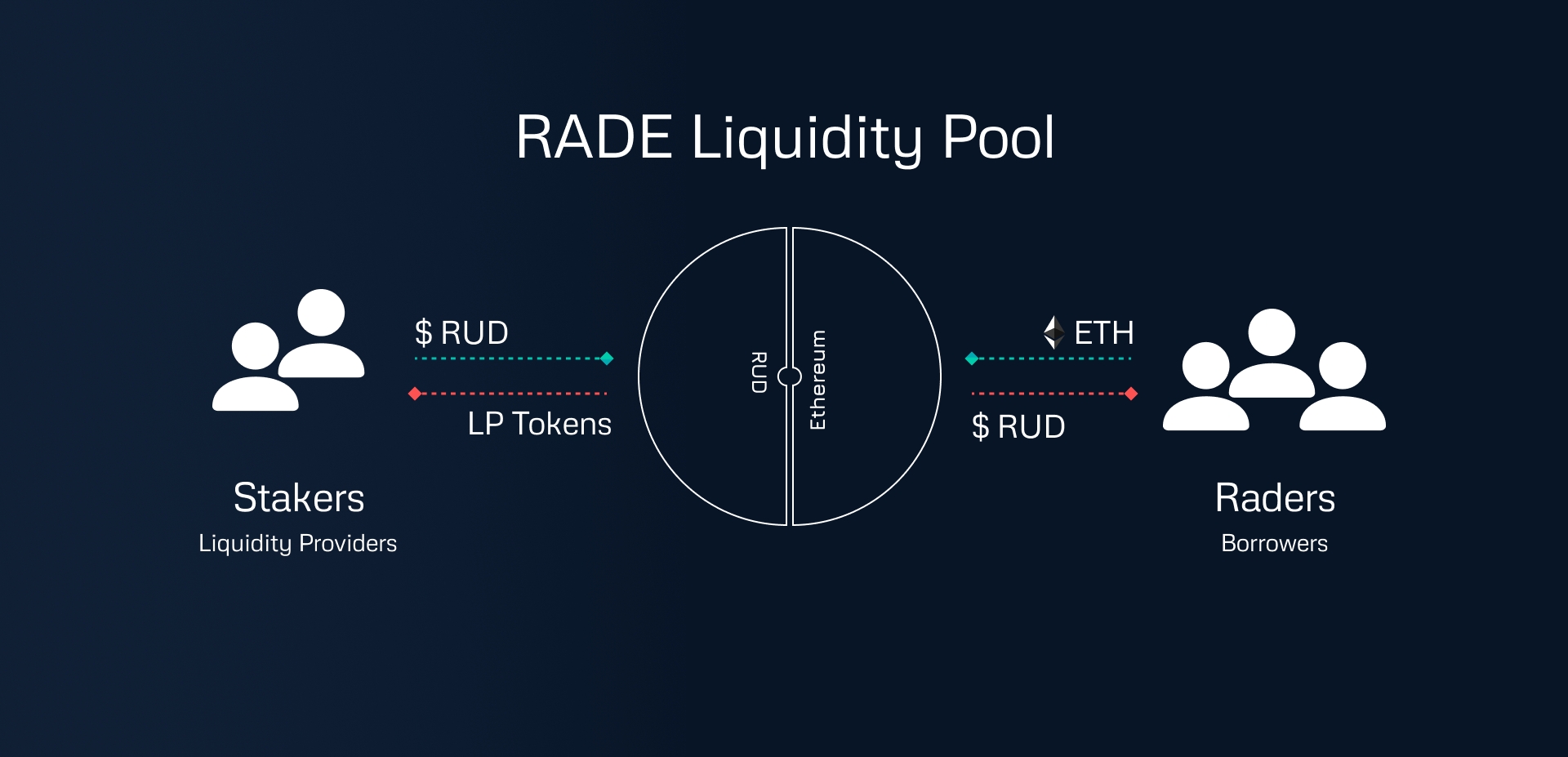🏦Staking
Liquidity Providers
User can put on the hat of Liquidity providers (aka Stakers) to capitalize and replenish RADE's liquidity pool. They contribute $RUD to the liquidity pools and act as counter-party to and borrowers that are active on the protocol. In exchange for their contribution, liquidity providers earn fees every time a borrower borrow $RUD.
Mathematics
You can deposit any [FNY], currently only supported RUD - see implementation below for details] cryptocurrencies to stake on the platform.
Today, RADE only supports cryptocurrency staking mechanisms using RUD-ETH rails. You can either stake your RUD using either the RUD your purchased through your credit-card or other on-ramp methods, or you can directly stake your ETH. However, RADE will automatically convert the ETH into RUD stable coins, and you will be staking the current market-rates.
For instance, if you stake 1 ETH and if 1 ETH ~= $1600, your staking account with RADE will be opened using a staking balance of RUD 1600. The exact conversion amount will depend on several factors including, but not limited to, the current market rate across exchanges, the volatility index of the market at any given point of time. RADE, as a platform, use a series of robust methods, devoid of any single point of failures to ensure the reflected conversion rates are as accurate as possible to the market dynamics.
Behind the scenes
Staking and borrowing and counter-party complementary services provided by RADE as a platform using the RUD stable coin. Borrowers, a.k.a the Raders, borrow coins that were staked by the 'stakers'. Raders and Stakers make a complete round-trip trade.
Meaning, if there is no liquidity in the pool provided by any Stakers, the Raders cannot take out loans. In other words, all borrowed amount from the pool have to be backed 1:1 by a an equivalent amount of value, thereby significantly reducing the platform's (RADE's) risk by close to zero percent in that particular category of risks. All loan accounts have equivalent backing in the platform and can be recuperated to ensure Non-performing assets or NPA's are not a liquidity risk for the platform.

Last updated